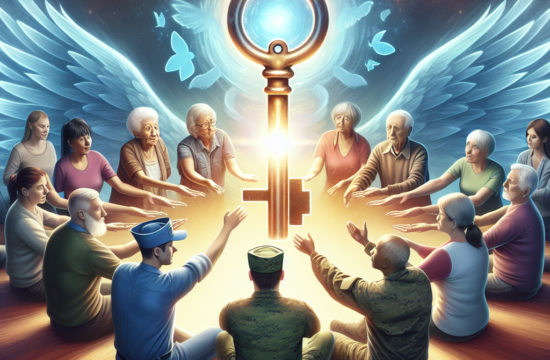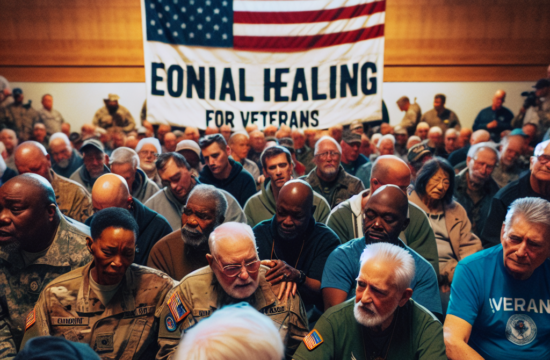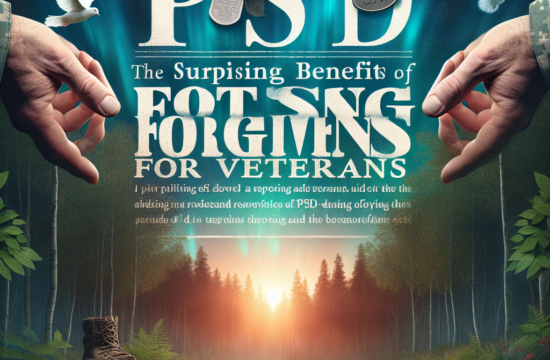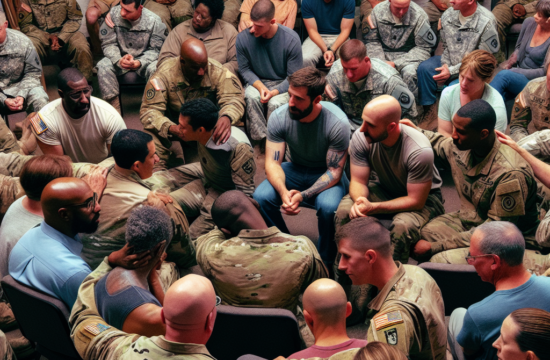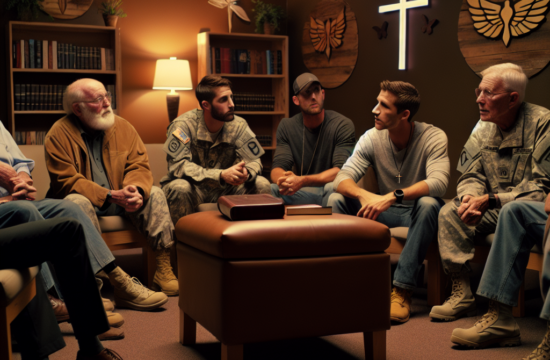==> Thank you for reading this post! Click Here If you are looking for support and Victory over PTSD.
Understanding Trauma in a Christ-Centered Context
Defining Trauma
First things first, let’s talk about what trauma really is. It’s more than just something that happened once; it’s how those experiences linger and impact our lives. I remember chatting with friends who felt stuck in patterns due to their pasts. It can be heavy stuff!
Trauma can show up in different forms – emotional, mental, spiritual. When we approach it through a Christ-centered lens, we start to see how these experiences can be transformed into something meaningful. It’s like taking those painful moments and asking God to help us shape them into healing stories.
Honestly, understanding trauma in this way has helped me and many others to reinterpret hardship. It’s not just baggage; it can actually lead us closer to God, driving home the point that we’re never really alone in our struggles.
The Role of Faith in Healing
Faith plays a crucial role in healing from trauma. It’s like having a sturdy anchor when the seas of life get rough. I often lean on scripture that reassures me of God’s promises, reminding me that healing is a journey and not a sprint.
I’ve seen how embracing faith can lead to breakthroughs. Prayer becomes a vital practice, as it’s a way to communicate with God, share our burdens, and seek His guidance in the healing process. It’s incredibly comforting to know that we have a powerful ally in our healing journey.
Moreover, faith gives us hope. When we believe that God can bring beauty from ashes, it opens up our hearts to possibilities we never thought existed. There’s something profound about knowing that our stories can turn around despite the circumstances.
Community Support
You don’t have to walk this path alone; community is everything! I learned this when I found a support group that embraced the Christ-centered approach. Being surrounded by individuals who genuinely understand your struggles helps you feel heard and validated.
Sharing stories within a community blossomed into something beautiful. It’s like a mutual healing garden where we all support each other. Just being around others who are also navigating their trauma can shine a light on your own path toward healing.
Lately, I’ve felt really encouraged by community prayers and gatherings. It’s such a powerful reminder that we’re all a part of something larger than ourselves, helping each other to heal through love and understanding.
Identifying Triggers and Patterns
Recognizing Personal Triggers
Okay, so now that we’ve laid a solid foundation on trauma, let’s dive into recognizing triggers. This has been one of my biggest learning curves. Triggers are those little things that send us spiraling back into our past pain, often without us even realizing it.
I remember having a specific sound that would bring back floodwaters of emotion. Recognizing that helped me understand which situations I needed to navigate with caution or even avoid altogether. It’s all about tuning into our bodies and minds, listening to what they’re trying to tell us.
Journaling has been a game-changer for identifying my triggers. Putting pen to paper helps me reflect on my feelings, and over time, I’ve seen clearer patterns emerge. It ends up being a sort of road map, showing me where I need to put in some extra work with God’s help.
Connecting Patterns to Past Trauma
Once we identify those triggers, the next step is connecting them to those past experiences. It can be a tough pill to swallow, but understanding that our responses often stem from previous hurts is wonderfully freeing.
I recall when I first connected a specific reaction to a childhood experience. It was like a light bulb going off! I could suddenly see how my past wasn’t just random; it had shaped how I approached new situations in life.
Through prayer and reflection, I’ve been able to reframe those past traumas. Instead of allowing them to imprison me, I’m learning to use that knowledge for growth and healing. It’s truly a transformative experience.
Practicing Mindful Responses
Practicing mindful responses is a skill that’s been super helpful in my healing journey. Instead of reacting impulsively to my triggers, I’ve started taking a deep breath and processing my feelings first. It sounds simple, but wow, it’s hard sometimes.
In moments of anxiety or emotional distress, I now try to pause and pray. I ask God for wisdom in how to respond rather than simply reacting based on fear or hurt. It’s that intentional moment that can change everything!
Mindfulness has helped me create a buffer between the trigger and my response. Over time, I think it has strengthened my ability to deal with uncomfortable emotions, allowing God’s peace to fill the spaces where chaos once lived.
Embracing Forgiveness
Understanding the Power of Forgiveness
Forgiveness is a crucial part of our healing, and honestly, it’s one of the hardest things I’ve had to grapple with. It’s easy to hold onto anger and bitterness when you’ve been hurt, but embracing forgiveness has been a vital key to unlock freedom.
I discovered that forgiveness doesn’t mean condoning the hurt. Instead, it’s about releasing the grip that pain has on my heart. It’s a conscious decision to free myself from the shackles of resentment, which has been liberating.
For me, prayer plays a huge role in the forgiveness journey. I often ask God to help me forgive those who have wronged me and to heal my heart. It’s a continuous process, but taking that first step is worth every effort.
Get Support and Help with Recovery! Visit us for more Information and Support
Forgiveness in Community
Sharing the journey of forgiveness within a supportive community can drastically change the game. Often, we think we’re alone in our struggles, but learning from others can provide insight and inspiration. I’ve had the pleasure of hearing stories in group settings where forgiveness unlocked peace and healing for many.
Everyone’s journey is different, but when we witness others giving and receiving forgiveness, it’s like seeing a living testimony of God’s grace. These shared experiences encourage each of us to experience our own moments of letting go.
Group discussions focused on forgiveness often lead to deeper understanding and compassion. It’s easier to forgive when we can put ourselves in someone else’s shoes, and that empathy has been a beautiful aspect of my healing.
Moving Forward After Forgiveness
After forgiving, we have to take steps to move forward. I’ve learned that it’s not just a one-time event; it’s an evolving process. Embracing forgiveness means I’m opening my heart to new opportunities and relationships without carrying that old baggage.
Setting boundaries is also crucial here. It’s essential to protect my healing space while still showing love and grace to those who may have hurt me. Learning to navigate these boundaries has become a vital part of maintaining my peace.
Ultimately, I believe that moving forward after forgiveness leads to powerful growth. It’s a process of rebuilding, and it’s exciting to witness how much strength and resilience we can cultivate when we lean on God during our healing journeys.
Healing through Prayer and Reflection
The Importance of Daily Prayer
Prayer has become my lifeline in the healing process. I can’t stress enough how finding time each day to connect with God has provided comfort and clarity. It’s during these moments that I lay everything at His feet and seek His guidance.
In my experience, prayer helps in acknowledging my feelings without judgment. I find a safe space to be raw and honest, and God meets me there with love and understanding. Some days, it’s just a simple plea for strength; other days, it’s full-on gratitude for the blessings in my life.
Daily prayer has transformed from a routine to a necessity. It nurtures my spirit and offers a fresh perspective on my challenges. I feel myself growing every day, and I attribute so much of that to the time spent in dialogue with my Creator.
Reflective Journaling as Healing
Now, combine prayer with journal time, and you have a powerhouse of healing tools. Reflective journaling has been one of the most productive practices for me. It allows me to sift through my thoughts and feelings, capturing where I’m at in my journey.
Writing helps me clarify my emotions, find patterns, and even notice answered prayers over time. It’s satisfying to look back and see how far I’ve come, which fuels my ongoing commitment to the healing process.
Journaling has also served as a therapeutic outlet for me in tough times. Sometimes I just pour out my heart without worrying about structure. It’s freeing! In those moments, I remind myself that it’s okay to be imperfect and still seek God’s love and healing.
Setting Intentional Goals
Finally, setting intentional goals has been pivotal. I realized that healing is not just about looking back; it’s about moving forward with purpose. I’ll often sit down, reflect, and brainstorm specific goals linked to my healing journey.
These goals can be as small as trying a new coping strategy or as monumental as seeking professional help. Every small step matters, and when I set intentions, I feel empowered to take active steps toward healing.
With God guiding me, I have faith that these goals will lead to transformation and deeper peace. Each step reminds me that healing doesn’t just happen; it’s a journey I deliberately choose to be part of.
Frequently Asked Questions
1. What is Christ-centered trauma healing?
Christ-centered trauma healing involves addressing trauma through the lens of faith, allowing individuals to find hope, forgiveness, and restoration with God’s guidance.
2. How can I identify my triggers?
Pay attention to your emotional reactions to certain situations or people. Journaling can help you track these instances to uncover patterns leading back to past traumas.
3. Is it necessary to forgive someone who has hurt me?
Forgiveness is primarily for your own healing. While it’s not always easy, letting go of resentment can free you from ongoing emotional pain.
4. How does prayer aid in trauma healing?
Prayer connects you with God, allowing for honest reflection and guidance. It also provides peace and comfort during difficult emotional processes.
5. Can community support truly make a difference in healing?
Absolutely! Community can provide understanding, encouragement, and shared experiences, which can significantly enhance your healing journey.






